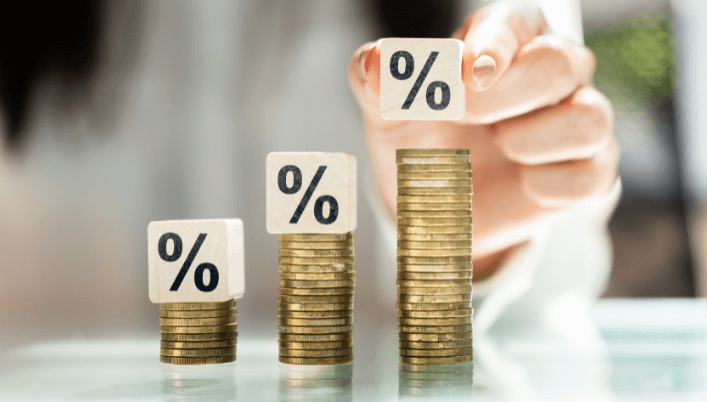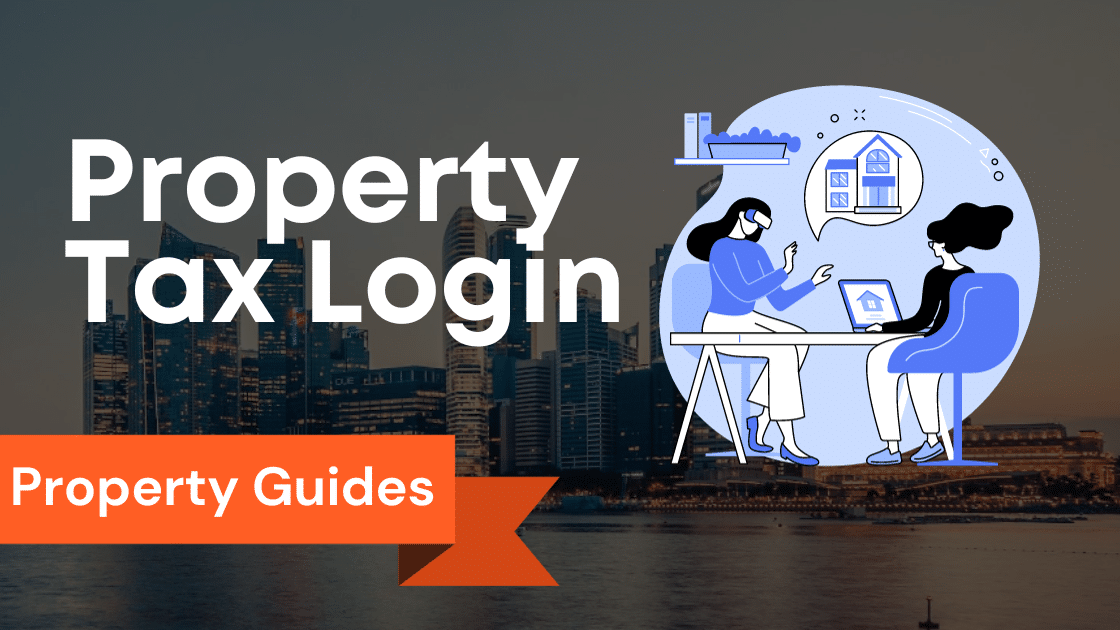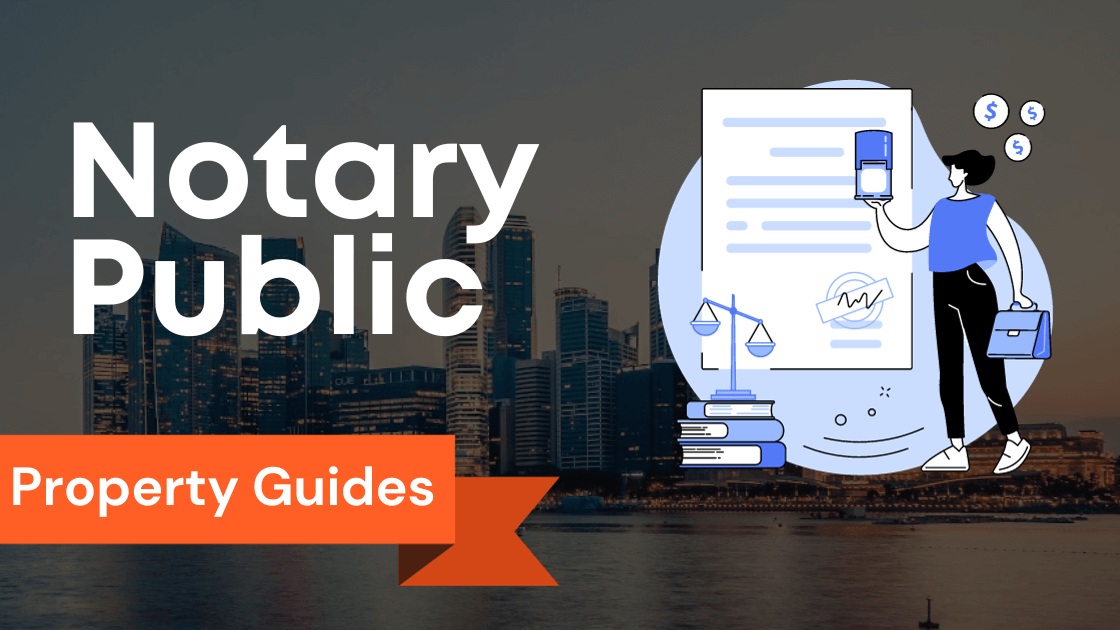Property Cooling Measures in Singapore

What are property cooling measures?
Property cooling measures in Singapore refer to the regulations and policies implemented by the government to manage the housing market and prevent excessive property price increases.
These measures may include stamp duties, loan restrictions, and increased taxes on property transactions.
The government introduced these measures to alleviate the tight housing market, regulate property purchases, and maintain a sustainable property market.
The cooling measures target various property types, including residential properties, to ensure a balanced and stable housing demand.
Why were property cooling measures introduced in Singapore?
Property cooling measures were introduced in Singapore to achieve two main objectives: sustaining a healthy property market and prioritizing housing for Singaporean citizens.
In September 2022, the government implemented these measures to curb property speculation and prevent a property bubble.
The measures aim to ensure a fair and transparent property market by discouraging excessive speculation and fostering long-term property ownership.
Additionally, the introduction of the Singapore Real Estate Exchange enhances price transparency and facilitates informed property transactions.
What are the latest property cooling measures in Singapore?
The latest property cooling measures in Singapore primarily focus on housing for owner-occupation and property taxes for residential property owners.
These measures aim to discourage excessive property investment and promote a balanced property portfolio.
The latest measures include tighter loan-to-value limits for property purchases, higher stamp duties for multiple property purchases, and increased property taxes for residential property owners with larger property portfolios.
http://www.youtube.com/watch?v=pl0z63WaguI
These measures play a crucial role in maintaining a sustainable and affordable property market in Singapore.
Key Takeaways
- Purpose of Cooling Measures: Property cooling measures aim to regulate the housing market, curb speculation, and maintain a sustainable property market.
- Latest Measures: The latest measures focus on discouraging excessive property investment and include tighter loan-to-value limits, higher stamp duties, and increased property taxes for residential property owners.
- Additional Buyer’s Stamp Duty (ABSD): ABSD is a key component of the measures, targeting foreign buyers and investors. Rates vary based on citizenship status and property type.
- Impact on the Housing Market: These measures have reduced property transactions, promoting stability and affordability. They also ensure responsible borrowing and financial soundness of buyers.
- Potential Benefits: Benefits include a sustainable property market, affordability, and protection from future interest rate increases.
- Potential Drawbacks: Drawbacks include a slowdown in the property market and potential deterrence of foreign investments.
- Impact on HDB Flats: Measures for HDB flats include resale levy increases and a wait-out period for second property loans.
- HDB Loan Measures: Measures for HDB loans involve additional conveyance duties and tighter eligibility criteria.
- Future of Cooling Measures: The future measures are likely to be moderate and gradual, focusing on maintaining affordability and stability.
- Preparation for Future Measures: Singaporeans should stay informed, assess their financial ability, and explore alternatives like deferred payment schemes.
ABSD Rates in Singapore

What is ABSD?
ABSD, short for Additional Buyer’s Stamp Duty, is a stamp duty introduced by the Singapore government in September 2012.
Its purpose is to regulate the property market and discourage excessive demand from foreign buyers and investors.
The ABSD rates have seen several revisions over the years to adapt to market conditions and achieve the desired outcomes.
The ABSD applies to various types of property transactions, including residential properties, commercial properties, and industrial properties.
It also applies to the purchase of multiple properties and the purchase of properties by housing developers engaged in the business of housing development.
For individuals purchasing residential properties, there is a 15-month wait-out period between the sale of their existing property and the purchase of a new one to be exempted from the ABSD.
The ABSD is also subject to the total debt servicing ratio (TDSR) and the debt servicing framework to ensure borrowers do not overextend themselves financially.
How is ABSD calculated?
The ABSD rates for residential properties are calculated based on a percentage of the purchase price or market value, whichever is higher.
The rates vary depending on the citizenship status of the buyer, the number of properties owned, and the profile of the buyer (whether they are an entity or an individual).
For example, a Singapore citizen purchasing their first residential property pays an ABSD rate of 0%.
However, a foreigner purchasing their first residential property pays an ABSD rate of 20%.
The rates increase for subsequent property purchases.
http://www.youtube.com/watch?v=OoKI6hmLBeQ
Additionally, the ABSD rates may be affected by factors such as joint borrowers, income ratios, and the age of borrowers.
These factors have been introduced to address concerns about affordability and ensure responsible borrowing.
What are the ABSD rates for different types of property purchases in Singapore?
The ABSD rates for different types of property purchases in Singapore are as follows:
- Non-subsidized HDB resale flats: Singapore citizens are exempt from ABSD, while permanent residents pay an ABSD rate of 5% and foreigners pay a rate of 20%.
- Prescribed immovable properties in Singapore: Singapore citizens pay an ABSD rate of 12% for the first property, 15% for the second property, and 20% for subsequent properties.
- Permanent residents pay an ABSD rate of 5% for the first property and 15% for subsequent properties.
- Foreigners pay an ABSD rate of 20% for all properties.
These ABSD rates are applicable until 17 May 2023 and are subject to revisions by the Singapore government based on market conditions and policy objectives.
Overall, the ABSD rates in Singapore play a crucial role in regulating the property market, ensuring affordability, and maintaining sustainable economic growth.
Individuals and businesses involved in property transactions need to stay informed about these rates to make well-informed decisions.
Impact of Property Cooling Measures on the Housing Market

How have property cooling measures affected the Singapore housing market?
Property cooling measures have had a significant impact on the housing market in Singapore.
These measures were implemented to maintain a sustainable property market, alleviate the tight housing market, and curb excessive property price growth.
One of the main effects of these measures is the reduction in housing demand.
The additional Buyer’s Stamp Duty (ABSD) and Seller’s Stamp Duty (SSD) imposed on property purchases have discouraged speculation and short-term property flipping.
As a result, the number of property transactions has decreased, leading to a more stable and sustainable market.
Furthermore, property taxes have been increased for multiple property owners, discouraging excessive property holdings and curbing transaction volumes.
The measures also restrict joint acquirers of residential properties, ensuring that properties are purchased by genuine homebuyers rather than speculative investors.
What are the potential benefits of property cooling measures?
Property cooling measures have several potential benefits for the Singapore housing market.
Firstly, these measures promote a sustainable property market by preventing excessive price growth and speculation.
This helps to maintain affordability and prevent a housing bubble.
Secondly, the measures aim to ensure that property buyers are financially sound and capable of sustaining their mortgage repayments.
The Total Debt Servicing Ratio framework and the affordability stress test help to assess buyers’ ability to handle mortgage repayments, reducing the risk of default.
Thirdly, the measures encourage property buyers to consider the actual loan rate rather than relying on low initial interest rates.
This protects buyers from potential interest rate increases in the future, ensuring greater financial stability.
What are the potential drawbacks of property cooling measures?
While property cooling measures have their benefits, there are also potential drawbacks to consider.
These measures can create a moderate demand for residential properties, leading to a slowdown in the property market.
This can impact property developers and the construction industry, as the demand for residential property completions may decrease.
Additionally, foreign buyers may be deterred from investing in the Singapore housing market due to the higher ABSD rates imposed on them.
This could potentially reduce foreign investments and the diversification of the property market.
Lastly, the minimum occupation period for public housing and the restrictions on deferred payment schemes may limit the flexibility for homeowners.
These measures aim to encourage stability and prevent property flipping but could impact homeowners’ ability to sell or transfer their properties in certain situations.
In conclusion, property cooling measures in Singapore have had a significant impact on the housing market.
While they promote a sustainable property market and alleviate the tight housing market, they also have potential drawbacks such as a decrease in transaction volumes and limitations on homeowners’ flexibility.
Overall, these measures play a crucial role in ensuring a stable and balanced housing market in Singapore.
Property Cooling Measures for HDB Flats and HDB Loans

The Singapore government has implemented property cooling measures to regulate the housing market and ensure a sustainable and affordable housing environment.
These measures specifically target HDB flats and HDB loans, which are widely popular among Singaporeans.
Here, we will explore the property cooling measures for HDB flats and HDB loans, as well as their impact on the housing market.
What are the property cooling measures for HDB flats?
For individuals purchasing their first residential property from December 2021 to September 2022, they are required to sell their first residential property within 6 months of the purchase.
Additionally, the resale levy for non-subsidized HDB resale flats has been increased.
The Housing and Development Board (HDB) has also introduced a 15-month wait period before eligible buyers can obtain a loan for their second residential property.
This measure aims to prevent speculative buying and promote affordability for Singaporean households.
What are the property cooling measures for HDB loans?
Starting from the fourth quarter of 2023, additional conveyance duties will be imposed on buyers who opt for deferred payment schemes.
These measures are part of the government’s effort to ensure responsible borrowing and prevent excessive leverage among private homeowners.
The eligibility criteria for HDB loans have also been tightened, considering factors such as additional housing measures and private property ownership.
Measures such as the introduction of an asset ratio and minimum cash payment requirements aim to prevent over-indebtedness and encourage sustainable homeownership.
How have property cooling measures affected the HDB market?
The property cooling measures have had a significant impact on the HDB market.
They have helped stabilize property prices, prevent excessive speculation, and promote affordable housing for Singaporeans.
These measures have encouraged homebuyers to make informed decisions and avoid excessive borrowing.
The tightening of eligibility criteria and the introduction of additional housing measures ensure that homeowners have the financial means to sustain their property investment.
These measures have also contributed to a more sustainable housing market by managing the supply and demand dynamics and ensuring a steady pipeline of affordable residential lands.
In conclusion, the property cooling measures for HDB flats and HDB loans play a crucial role in maintaining a sustainable and affordable housing market in Singapore.
These measures aim to regulate property prices, prevent speculative buying, and promote responsible homeownership.
By ensuring that homeowners have the financial means to sustain their investments, the government strives to create a stable and secure housing environment for all Singaporeans.
What to Expect from the Future of Property Cooling Measures in Singapore

In Singapore, property cooling measures have played a crucial role in ensuring a stable and sustainable property market.
As the real estate landscape evolves, it is essential to understand what the future holds for these measures and how they may impact property purchases.
In this article, we will delve into whether the measures will be tightened or relaxed, the factors that will determine their future, and what Singaporeans can do to prepare.
Will property cooling measures be tightened or relaxed in the future?
The latest round of property cooling measures introduced in July 2018 aimed to curb excessive demand and prevent speculation.
Specifically, the additional buyer’s stamp duty (ABSD) rates for second and subsequent property purchases were increased.
While it is challenging to predict the exact direction of future measures, the government’s focus on maintaining affordability and stability suggests that any changes are likely to be moderate and gradual.
What are the factors that will determine the future of property cooling measures in Singapore?
Several factors will influence the future of property cooling measures in Singapore.
These include the state of the housing market, the effectiveness of the existing measures in achieving their objectives, the impact on property taxes and cash flow, and the sentiments of current and ex-private property owners.
The government is likely to carefully evaluate these factors before making any decision on whether to tighten or relax the measures.
How can Singaporeans prepare for the future of property cooling measures?
To prepare for the future of property cooling measures, Singaporeans can consider a few key strategies.
First, they should stay informed about the prescribed immovable properties in Singapore and any potential changes to the measures.
This knowledge will enable them to make informed decisions when entering the property market.
Second, it is crucial to ensure a sustainable property market by avoiding excessive speculation and maintaining a balanced demand for investment properties.
This means carefully assessing their financial ability to afford additional properties and avoiding overextending themselves.
Finally, Singaporeans can explore alternatives such as deferred payment schemes for their property purchases, especially for second homes.
These schemes provide flexibility in managing cash flow and can be a viable option in a market affected by cooling measures.
In conclusion, while it is challenging to predict the exact future of property cooling measures in Singapore, Singaporeans need to stay informed, make prudent financial decisions, and adapt to any changes that may arise.
By doing so, they can navigate the property market with confidence and maximize their potential for success.
Conclusion
The property cooling measures implemented in Singapore have been crucial in ensuring a sustainable property market and prioritizing housing for Singapore citizens and permanent residents.
These measures, which have been in place since December 2021, aim to curb speculative activities and maintain a stable and affordable housing market.
Under these measures, individuals purchasing their second or subsequent residential property are subject to additional buyer’s stamp duty (ABSD).
The latest round of ABSD rates, implemented on 26 April 2023, will apply to property transactions based on 2022 data.
For Singaporeans, the ABSD rate starts at 12% for the second property and increases to 15% for the third and subsequent residential properties.
Similarly, Singapore Permanent Residents (SPRs) purchasing their first residential property will pay an ABSD rate of 5%, while foreigners buying any residential property will be subject to a 20% ABSD rate.
The government has also introduced additional conveyance duties for buyers of completed properties.
This measure ensures that buyers who purchase completed properties pay their fair share of duties, similar to buyers of uncompleted properties.
This move helps to level the playing field and prevent buyers from exploiting differences in tax treatment between these two types of properties.
The latest set of cooling measures reinforces the government’s commitment to maintaining a stable housing market.
The Ministry of National Development aims to strike a balance between providing affordable housing options and safeguarding the interests of the population.
By discouraging speculative activities and imposing higher costs on property investors, the government seeks to ensure that homeownership remains attainable for Singaporeans.
The impact of these measures is evident in the residential property market.
From the first quarter of 2023, the number of residential property transactions based on data from 2022 decreased significantly.
This decline reflects the effectiveness of the cooling measures in moderating property demand and preventing excessive price increases.
It is important to note that the government’s aim is not to suppress the property market entirely but to create a sustainable and stable environment.
By encouraging owner-occupation and prioritizing housing for Singaporeans, the authorities are working towards a long-term solution that benefits the majority of the population.
In conclusion, the property cooling measures in Singapore have been instrumental in maintaining a sustainable property market and prioritizing housing for citizens and permanent residents.
These measures have effectively curbed speculative activities and moderated property demand, ensuring long-term affordability and stability in the housing market.
By striking a balance between the interests of homeowners and property investors, the government aims to create a housing landscape that benefits the entire population.
Frequently Asked Questions
What are property cooling measures?
Property cooling measures are government-imposed policies designed to regulate the residential property market and prevent excessive price increases.
When were the cooling measures introduced in Singapore?
The cooling measures were introduced in Singapore in [enter date].
Are there any new cooling measures in place for 2023?
Yes, there are new cooling measures in place since [enter date].
What is the limit for HDB properties under the cooling measures?
The limit for HDB properties is [enter limit] under the cooling measures.
Has there been any round of cooling measures introduced in September 2022?
Yes, there has been a round of cooling measures introduced in September 2022.
What is the impact of the cooling measures on the private residential property market?
The cooling measures aim to stabilize and cool down the private residential property market.
Can you explain the measures that may affect subsequent residential property transactions?
The measures may affect subsequent residential property transactions by imposing additional taxes or restrictions.
Who is responsible for implementing the cooling measures?
The Monetary Authority of Singapore is responsible for implementing the cooling measures.
How many rounds of cooling measures have been introduced so far?
There have been [enter number] rounds of cooling measures introduced since [enter year].
Do the cooling measures apply to private property owners as well?
Yes, the cooling measures apply to private property owners.












